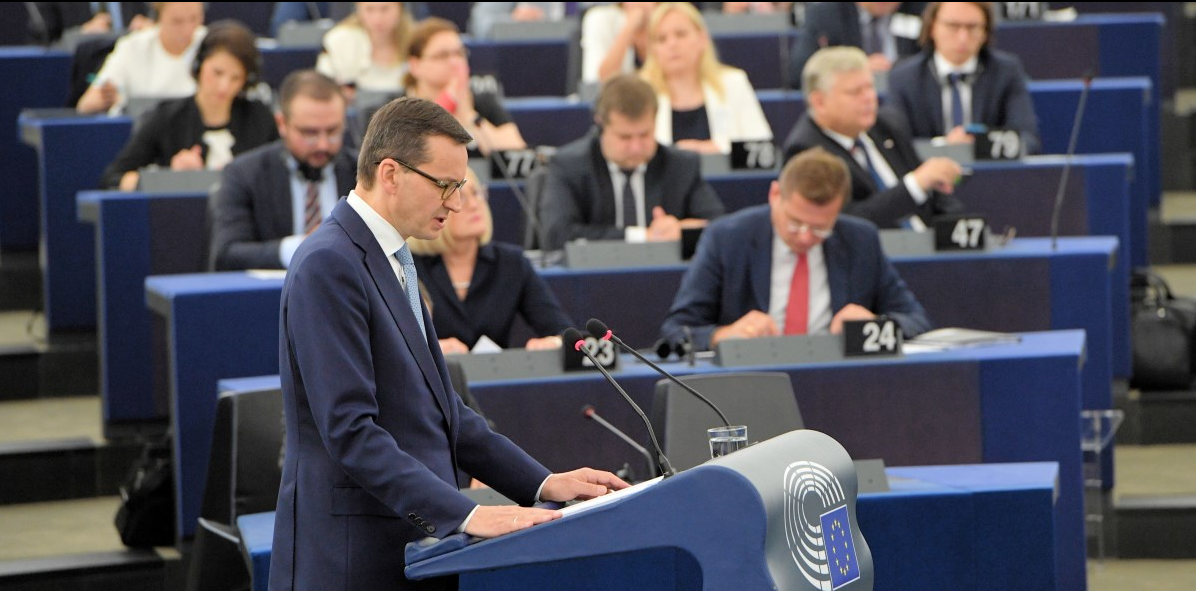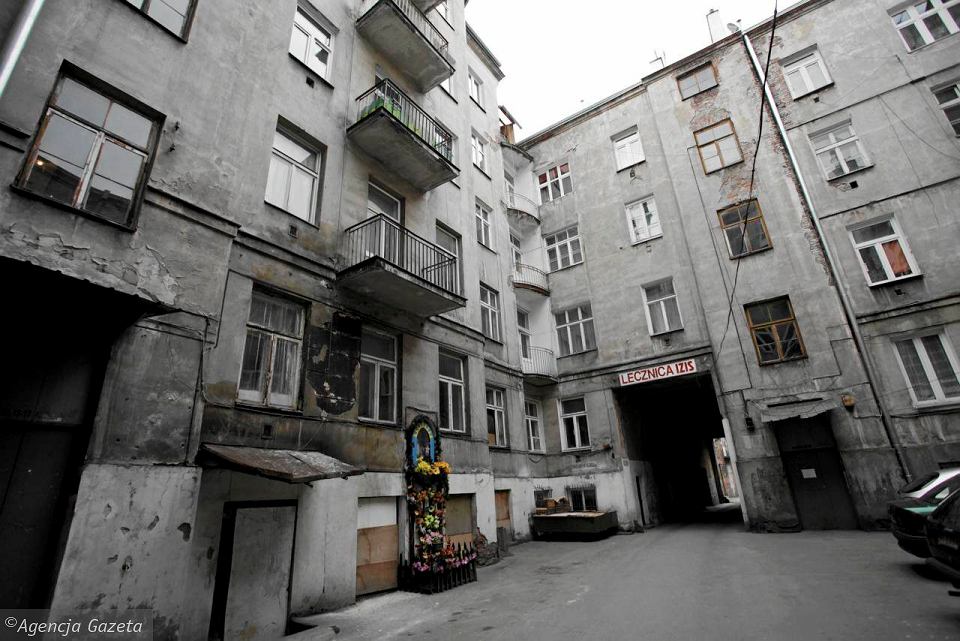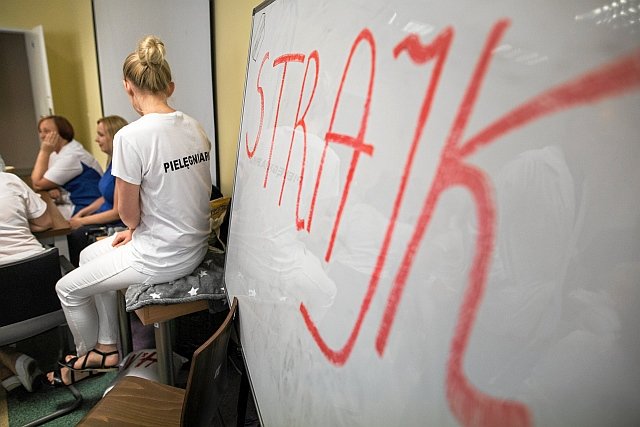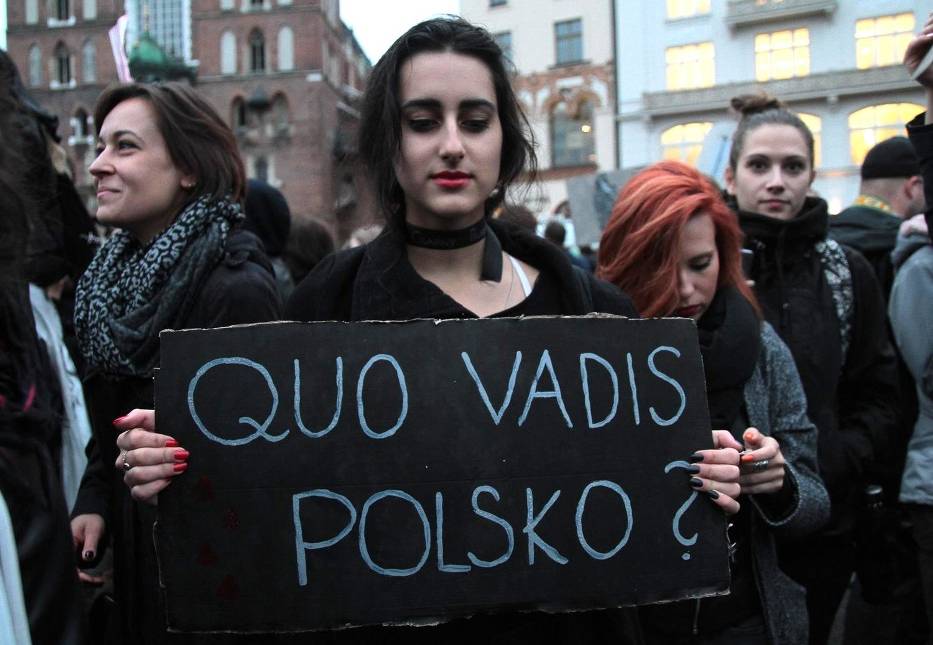The Polish government and the European Commission are locked in conflict over proposed changes to Poland’s Supreme Court. The EU is considering taking the unprecedented step of stripping Poland of its voting rights within the Union as punishment for infringing on the rule of law. It has also threatened to cut EU development funds for Poland unless the rule of law is protected.
These and many other political tremors show us that, unlike what many bourgeois commentators thought even a few years ago, all is not quiet on the Polish front, and this institutional deadlock reflects deeper processes at play, which could result in much bigger destabilisation, putting the class struggle back on the agenda.
Illiberal democracy
The governing Law and Justice party (PiS) has been taking advantage of its majority in parliament to tighten control over the media and limit the power of the courts. Key figures in PiS look to Viktor Orbán in Hungary and even Recep Tayyip Erdoğan in Turkey (as highlighted during Erdoğan’s visit to Poland in October 2017) with admiration for the ‘illiberal democracies’ they’re constructing. The next PiS plan is to reform the laws for election to the European Parliament (EP), which would result in, among other things, more EP seats for PiS.
The government’s policies have provoked outrage from the liberal opposition, but their abstract defence of liberal democracy doesn’t seem to be gaining an active, mass response among Polish workers. The main opposition party, Civic Platform (PO), along with various political and other groupings have been calling street protests in defence of the Supreme Court and appealing to the EU to intervene. One of PO’s main arguments recently has been that PiS’s policies threaten the flow of EU development funds into Poland, whereas PO in power would guarantee that money.
Earlier in July the government decided to lower the retirement age of the judiciary from 70 to 65 years-old: a cynical ‘reform’ that conveniently would force 22 judges of the Supreme Court into early retirement, including the Supreme Court President, Małgorzata Gersdorf. The total number of judges would also be expanded to 120, giving the government the possibility of nominating two-thirds of the members of the Supreme Court in one fell swoop, thus securing political control. Judge Gersdorf is refusing to stand down, supported by the liberal opposition and the European Union, who insist that her candidacy constitutionally ends no sooner and no later than in 2020.
This conflict has caused a deadlock, amidst which PM Mateusz Morawiecki appeared on the tribune of the European Parliament. In his speech, he attempted to politically defend the record of the PiS, not just over the most recent constitutional matter but also in terms of allegedly increasing standards of living and his government’s popularity.
 Morawiecki's speech to the EU Parliament was a clumsy attempt to paint himself as a bold leader that was widely perceived as hypocritical / Image: Polskie Radio
Morawiecki's speech to the EU Parliament was a clumsy attempt to paint himself as a bold leader that was widely perceived as hypocritical / Image: Polskie Radio
In calling for a “democratic union of nations” and “people-serving” governments, he attempted to embarrass the EU, suggesting that the PiS is more faithful to so-called ‘European values’ than the EU currently is itself. Needless to say, this manoeuvre was doomed to fall on deaf ears in Brussels. Many EU member states are locked in deep crises themselves, so conceding to the PiS would undermine the EU’s authority even more, while it is dealing with important crises such as those in Italy or Spain.
The EU, representing the mainstream of the capitalist class, has no interest in any crisis that might further destabilise any of its member states, including Poland, but at the same time, it cannot afford to give in to pressure from the Polish government. It longs for the relative political tranquillity that the decade of Tusk-led, PO rule granted. However, the problem for the EU bureaucrats is that these days are long gone and cannot be recreated at will.
The speech was mostly an attempt by Morawiecki to paint himself as a bold leader in the eyes of his potential voters. Naturally, the speech was seen as hypocritical by the politicians and journalists who have followed the Polish constitutional crisis in the press. More importantly, this view was doubtlessly shared by ordinary people listening to the broadcast on their TVs and radios, most of whom are completely unfamiliar with the land of milk and honey that Morawiecki was bragging about. The ground on which Morawiecki and the whole PiS are treading is the most politically unstable since the re-establishment of the capitalist republic.
What is there to defend?
In 2016, mass protests erupted against the PiS government over its attempt to tighten Poland’s already strict abortion laws. Access to abortion is a basic democratic right, and this was the spark for a huge movement. The rule of law is likewise a basic democratic right, and yet so far the current situation has not sparked a similar response. Why is this?
According to an IBRiS poll, 54 percent of Poles regard the latest ‘reforms’ negatively, with only 34 percent supporting them. It is without doubt that the sober majority of society will see them as cynical moves by the PiS to extend its own influence. However, the judiciary was not very popular in the first place. Only 34 percent said that they trusted the courts, with the rest of the respondents saying they are indifferent or don’t trust them at all. This trend seems to be repeated in other studies that were carried out in recent times. Of course, it is in the nature of polls to be quite abstract in portraying genuine moods, but considering the history of the judiciary in Poland, there is no reason to believe this is an outlier.
Under Stalinism, the judiciary was used for a long time to politically suppress the working class whenever possible. The bureaucracy eventually capitulated to the pressures of the ‘winds of change’ in 1989. Many state representatives, including in the judiciary, switched their Polish United Workers’ Party (the ruling party in the Stalinist Period) membership cards for those of newly sprung parties of counterrevolution, on the ‘left’ and also the right. All that was required to complete this miraculous political transition was an even-more-handsome salary in a prestigious institution or documentation proving private ownership over some profitable land or industry.
Neither the bourgeois opinion-makers nor the remnants of Stalinism on the fringes of the left like to be reminded that it wasn’t the workers who lorded over the capitalist counterrevolution, but the most rotten, opportunist elements in and around the so-called Polish United Workers’ Party and the Solidarność leadership, all in a close alliance with western banks and monopolies.
Since then, for nearly 30 years, these same old faces have been responsible not just for generally legitimising the capitalist system but also giving the green light to vicious evictions, welfare withdrawals, corrupt manoeuvres and so on. Indeed, these elements provided a useful target for the PiS in its efforts to “drain the swamp” – through replacing the self-serving bureaucrats of yesterday with a new breed of self-serving bureaucrats. There is no reason why anyone would trust the so-called ‘independent judiciary’ upon which the liberal leaders call. The only accountability that exists there is to fellow cronies, who can provide a leg up to a higher position and salary in the judicial system.
How did Polish capitalism get here?
The rise of Orbán, Putin and Kaczynski reveals some common patterns. After all, similar conditions produce similar results. For decades, Eastern Europe developed in different circumstances and in a different direction than Western Europe. The collapse of the USSR and Eastern Bloc sent a shockwave of counterrevolution around the world. The idea that capitalism defeated socialism, culminating in the “end of history”, predominated, especially in the epicentre of this great human tragedy.
30 years later, the capitalist crisis has proved that history is far from settled, and everybody knows that something is deeply wrong. In Poland, as well as countries like Hungary and Russia, despite the bankruptcy of the capitalist system, the current raft of politicians came to power on the back of a relative economic recovery, coupled with a general sense of impatience and frustration from below. Polish capitalism today is indeed more integrated into the capitalist world market than it was in the shaky 1990s. However, at the same time, it developed a much larger, modern and powerful working class, which retrains a rich revolutionary tradition. Its position today is concrete, and can therefore only be understood through concrete study.
 Working-class district in Praga, Warsaw / Image: Gazeta Wyborcza
Working-class district in Praga, Warsaw / Image: Gazeta Wyborcza
After 1989 Eastern Europe became a rich field for investment and speculation by foreign banks and monopolies. This caused a sharp polarisation with an unseen accumulation of wealth and power at one extreme; and misery, unemployment and degradation at the other. Unemployment reached as high as 20 percent, industries closed down one after another, and Poles were once again experiencing alienation, unemployment, inequality, crime, homelessness and degradation on a tremendous scale as capitalism was being restored.
This counterrevolution (overseen by the infamous plan of Leszek Balcerowicz, often compared to Margaret Thatcher), was known as the shock therapy. Further down the line, Poland had to go through many other important procedures as it was adapting to the European markets, by entering the EU in 2004, signing the Lisbon Treaty in 2008 and opening its borders up in the Schengen Zone that same year.
In terms of standards of living, real wages and levels of consumption, year after year Poland trailed in Europe along with countries like Romania and Lithuania. Millions of Poles moved abroad in search of a more stable life, with nearly 3m Poles living in Germany and almost a million in the United Kingdom. In Ireland, Polish replaced Irish as the second language of the Republic. The scale of this displacement speaks volumes about the real situation millions of Polish workers had to face, as minimum wage, unskilled jobs in the west are considered a haven of stability compared to the dire situation in Poland. If you ask a Polish worker about a decade of financial crisis, they’ll reply along the lines of “Decade? I didn’t notice there was a decade of crisis. We had a non-stop crisis for three decades in this country! How could it get even worse?”
In the old Warsaw Pact, which was the Eastern Bloc’s reply to NATO, Poland was considered the second most important country, right after the USSR. However, Poland was not strong enough on its own to withstand the pressure of larger economies. Polish resources were plundered by western banks and monopolies, which carved up and divided between themselves the most profitable land, industries and enterprises of this economically important country.
Foreign investment was a crucial factor in determining why Poland was the only country in Europe to come out of the 2008 crisis with a net growth of GDP. Poland was not completely isolated from the general impact of the crisis (for example, the national debt doubled from 500m to 1000m Zlotys between 2008-2013). But nevertheless, with its vast potential for new markets, rich resources, cheap workforce and ‘flexible’ labour laws, its attractiveness was rejuvenated, from the point of view of the EU and private investors. This is why Poland’s recovery is not as weak as in countries of Western and Southern Europe.
Unemployment is at 6.1 percent, the lowest since 1989. Economic growth in 2017 was a solid 4.6 percent. The government is able to press ahead with policies such as 500+, which provides families with additional state-funded income. However, as mentioned before, the reforms that PiS are prepared to concede are not as stable as they would be in the epoch of a more general worldwide economic boom, which is completely ruled out under present conditions. The government has already backtracked on the inclusivity of 500+, and these reforms have been accompanied by counter-reforms. Welfare cuts for the disabled, or cuts in the health service are as much of a flagship of the PiS as its cynical and contradictory 500+ programme. The support for the PiS reflects a relative improvement in the living conditions of some sections of the population. It should go without saying, however, that this support base is unstable, ridden with contradictions, and endangered with swift collapse as the political and social crisis deepens.
Combustible material
We see, therefore, that the Polish working class, after all the shocks, twists and betrayals, has ample reason to seethe with anger. In the past months, there were mass movements and protests of health workers. While we researched this article, news came in that 500 nurses engaged in wildcat strikes in five hospitals in South-Eastern Poland over pay and working conditions. The disabled and care workers occupied the main hall of the parliament for over a month to fight against the cuts. Students and academic workers occupied universities during which they hosted public meetings and discussions about mass movements of 1968 and 1980.
Discontent over pay in the public sector, especially among teachers, is causing protests to flare up. Trade unions are demanding a 15 percent pay increase for teachers next year, something that the PiS government has already resisted, which provoked the Teacher’s Union to mobilise its 200,000 members for strike action in September. And this is at the same time as the latest version of the Rich List has just been published showing that 100 people own over PLN 142bn, up 5bn from last year.
 500 nurses across Poland engaged in wildcat strikes / Image: innpoland
500 nurses across Poland engaged in wildcat strikes / Image: innpoland
Even the police force has just gone on a national “work-to-rule strike”, in which they refuse to give out fines and generally do the bare minimum required to keep the force going. From 16 July they were joined by border officers and other uniformed services. A general sense of frustration is building up not just among the working class but even some of the traditionally more passive and conservative layers of society. Although these struggles are still developing in relative isolation, they are symptoms of a general malaise in society, which can lead to bigger movements of the working class.
One of the most crucial reasons why this feeling isn’t channelled in a united, mass movement against the government is the abysmal leadership of the opposition. PO is a liberal party, organically incapable of appealing to and basing itself on the mass of ordinary people. It prefers to work through committees, think-tanks, backroom lobbying and whispering in the corridors of power. The most it can muster is a lukewarm demonstration with slogans in defence of judges, eurocrats, and the status quo. This can attract certain sections of the population, but the vast majority remain distrustful and unenthusiastic.
The protests against the abortion law were so powerful because they took the form of a strike. Shops and restaurants closed for the day to allow female workers to join the protests, and 100,000 people flooded the streets. It was working-class methods and collective mass action that had an impact.
The need for leadership
Where is the left to coordinate and lead action like this against PiS? There is not a single left-wing representative in parliament. Razem, a relatively new party founded as a Podemos copycat, but without its mass base, trails at the bottom of the polls. The SLD, the successor to the Communist Party, is making little impact, and its leadership continuously bends to the pressures of the right wing.
One figure, Robert Biedroń, the mayor of Słupsk and former MP for the SLD, has been touted as a new leader of the left. He remains popular and is seen as honest, as he cycles to his humble office and communicates with ordinary people. In presidential election polls, he frequently comes third, just behind the PO candidate, although he hasn’t announced his candidacy, let alone begun to campaign. Despite his relatively left-wing past, it is clear that the more popular he gets, the more he styles himself as a Macron rather than a Melenchon. He has recently sat down to talk with open neoliberals such as Schetyna and Petru about potential cooperation. It can’t be ruled out that this LGBT activist, with humble credentials and ‘compassionate’ slogans could garner support, which would strike a political blow against the Catholic Church, the PiS and its satellite parties and organisations. However, the links between Biedroń and the ‘respectable’ capitalist class are a lot more powerful than his links with the genuine left or the working class. This is why the mere prospect of Biedroń becoming president would not resolve the fundamental issues that gave rise to the PiS in the first place.
As mentioned before, the combustible material for a mass movement against the government is present in society, if only there was a left-wing party that could connect with it. What is required is to organise the working class, starting with the public sector, to use industrial action and mass struggle against the government. We need to replace the liberals’ defence of judges’ rights with a defence of workers’ rights. And instead of appealing to the EU to protect Polish ‘democracy’, we need an appeal to ordinary workers and youth to rely on no-one but themselves to fight for their interests. This struggle, once united, will express itself politically and completely transform the situation. On the basis of the experience of these struggles, more and more important layers will open up to the genuine, revolutionary ideas of Marxism. It will then be up to the Polish Marxists to be ready to transform these ideas into a material force that can change society.
Karl Liebknecht – German Marxist and comrade of Rosa Luxemburg – once said that youth is the flame of the revolution. The development of the class struggle will appeal to young people above all. Currently, the PiS and the Catholic Church are closely aligned as two pillars of the establishment. But a recent poll showed that Poland has the biggest generational gap in religiosity out of any country surveyed. Young people are rapidly turning away from the church, a phenomenon which is the seed of a powerful movement against the establishment equivalent to what we have seen in Ireland recently.
In addition, a recent poll for Rzeczpospolita found that 59 percent of young people felt that the government was at fault in the rule of law dispute with the EU. This doesn’t necessarily indicate support for PO, because many young people voted PiS in 2015 to strike a blow against the previous PO government. Instead this suggests a general dislike for the entire political establishment.
 Black Protest in defence of women's rights, Kraków / Image: naszemiasto
Black Protest in defence of women's rights, Kraków / Image: naszemiasto
What does the future hold?
The appeal of a radical left-wing programme, based on the working class, will gain popularity as the economy inevitably weakens. The present stability of the economy is thanks partly to growth in domestic consumption. The 500+ and other government schemes are putting money in people’s pockets, which they are happy to spend. And it is also thanks to an increase in exports to Europe. These are some of the factors that account for the expected budget surplus of 9.5bn Zlotys (approximately 2.2bn Euros). However, this is surrounded by a thick cloud of anxiety. The finance minister, Teresa Czerwińska, is expected to announce the budget later this month. But she’s also warning that the economic situation after July is “not looking optimistic”.
She highlighted that this is because the government schemes are “expensive in the long term”. Indeed, serious bourgeois economists aren’t convinced that they can last very long, even assuming the rest of the world economy remains stable. As a result, Czerwińska announced that the government needs to start balancing the budget a lot more carefully considering the long-term effects that policies such as 500+ would have on the economy. Beyond that, the Eurozone growth slowed at the beginning of 2018, and all the indicators point to a new world slump, which will suffocate exports.
To make matters worse, the EU’s budget proposals for 2021 onwards are to divert 30bn Euros away from Eastern Europe towards Southern Europe, meaning Poland would lose out on a huge chunk of investment. Depleted credit, the protectionist policies of the PiS, the gloomy state of the world economy and Trump’s fuelling of a potential trade war could all have a negative impact on the Polish economy. From one of the least-affected European economies in 2008, it could turn into one of the worst affected. Stock market investors have already taken an uncharacteristically cautious approach to Poland. The stock exchange value has fallen by 5 percent over the last year, reflecting concerns that Poland is headed for economic problems.
When the economic crisis hits, the government schemes will unravel. PiS is pursuing a policy of large-scale, top-down nationalisations to protect Polish business at the expense of foreign competition. In the context of an economic crisis, this will leave the government propping up a vast proportion of the struggling economy. Under such pressure, inevitably state funds will run out and cuts, job losses, and a crisis in living standards for millions of people will become burning issues.
What is needed is a revolutionary programme offering a fundamental change in society, based on the organised forces of the working class. Neither the PO, nor any of the liberal opposition groups offer any way forward. They are completely incapable of putting up a serious fight against the government and the capitalist elite it represents. The flags of EU and PO represent the past, and will soon be discarded. The red flag of the international working class is the banner of the future, under which we must now organise ourselves and prepare for the battles to come.

